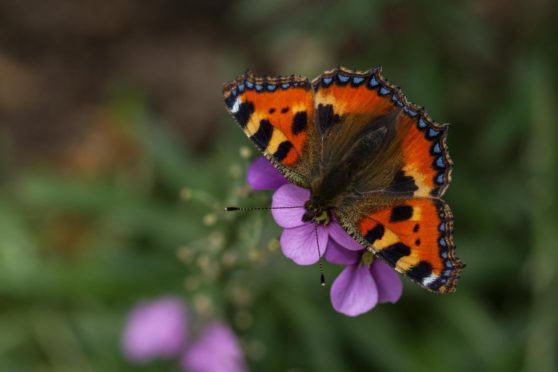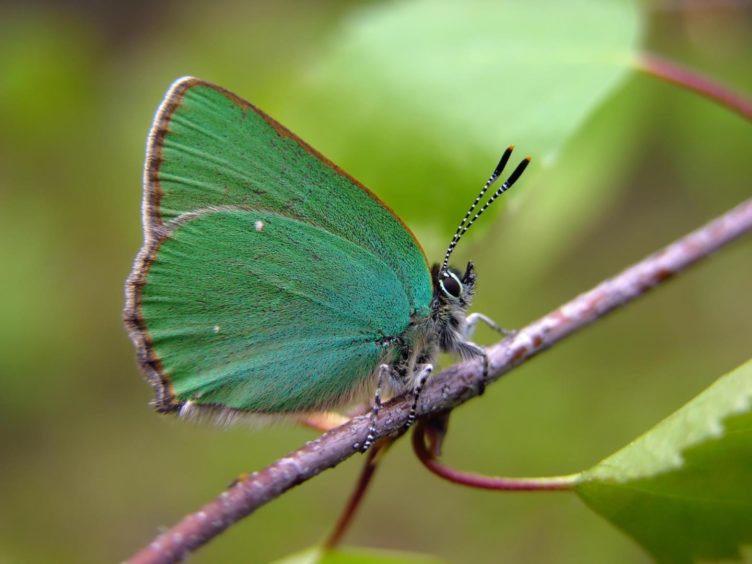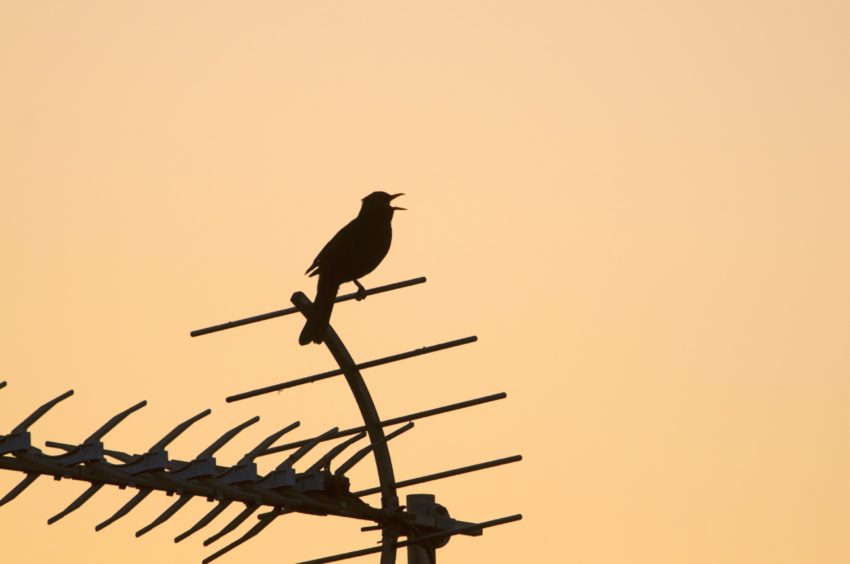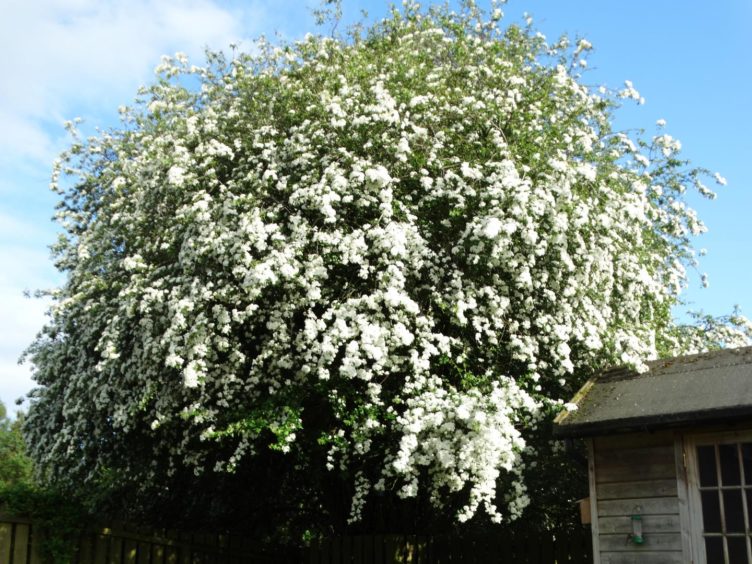There is a worrying absence of butterflies when I would expect to be seeing some numbers of small tortoiseshells, at least, in the garden.
They are one of our commonest butterfly species, hibernating over winter and breeding here in the north-east.
I’ve only seen them out walking with Inka when there have been several small whites on the wing too.
My only sighting this year of an orange tip has been one feeding on hedgerow flowers in my son James’s garden when we visited him a fortnight ago.
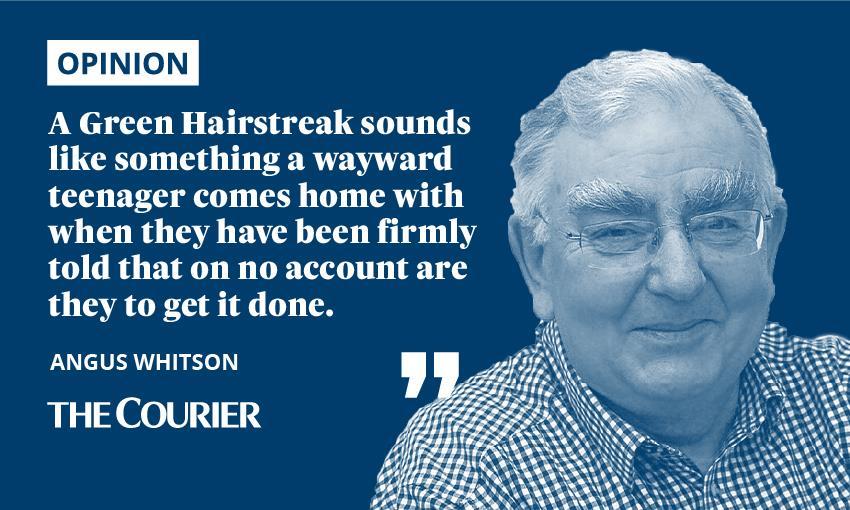
There’s been a handful of red admirals, colourful migrants from northern Africa which arrive on England’s south coast and spread throughout the UK.
They lay their eggs on stinging nettles, so you should leave a small patch of these normally unwelcome weeds in an out-of-the-way corner of your garden to encourage them.
Similar in size and shape and with black and white upper wingtips, red admirals and painted ladies are sometimes mistaken for each other, but painted ladies have more subtle patterns with predominantly orange rather than red colouration.
What’s in a name?
Our forebears had creative minds when it came to naming the various species of butterflies.
A green hairstreak sounds something a wayward teenager comes home with when they have been firmly told that on no account are they to get it done.
A neighbour who is a keen amateur entomologist was excited to get a picture of one on a walk round Fasque Lake.
I’ve never been lucky enough to see one in the wild and I’ve been round there with Inka plenty of times but the elusive insect eludes me still.
An entertaining and informative book, written with a light touch, about our British butterflies is The Butterfly Isles by Patrick Barkham.
It is the account of the author’s determination to track down every species of British butterfly from the Highlands of Scotland to the south coast of England in the course of a single year – and he successfully achieves it.
Song at sunrise
Several times recently I’ve heard the comment that the dawn chorus is so much better this year.
Living as we do on the edge of a village looking out over fields and woodland it is not particularly applicable to us.
But in more urban settings I can well believe that the effects of lockdown with the reduction in traffic activity and ambient noise pollution results in the dawn chorus being louder and clearer than many can remember.
The best of the dawn chorus is heard in the spring and summer months.
Migrant birds such as chiffchaffs and willow warblers coming here to breed start arriving in April and add their voices to the heavenly refrain.
Different birds sing at different times with some, like the song thrush, starting even before sunrise.
Blackbirds, robins, wrens and chaffinches are among the early risers with other birds adding their voices later in the morning.
It’s the male birds which are the choristers and their song cycle, starting in early April, is to claim nesting territory and to advertise for a mate, for reproduction of the species is their only real purpose in life.
They continue to sing to warn off unwelcome intruders and to protect the hen birds sitting on eggs.
And so the dawn chorus continues through summer until the nesting season ends and migrant birds start their long journeys back to their winter quarters.
The Doyenne has been getting her blackbirds and starlings mixed up. I tell her to forget looking out for the blackbird’s yellow beak or the starling’s iridescent, metallic plumage – the most obvious giveaway is that starlings run and blackbirds hop.
Where the bee sucks
As an entomological afterthought if you are interested in bumblebees, an excellent book on these furry, flying bombers is A Sting in The Tail by Dave Goulson.
Among our most loved and familiar garden insects, their affectionate nickname here in the north-east is foggie bummers, while in England in days of old they were called dumbledores – could this be the origin of the character in the Harry Potter books?
Sadly, in common with much of our everyday wildlife, they face an increasingly precarious future.
As ever, it is in our hands to protect their environment and create habitats such as planting wildflower-rich meadows or corners in our gardens where they can flourish.
The hawthorn is one of Scotland’s best-known native trees usually growing as a hedgerow shrub, but left unchecked it grows into a substantial tree.
An impressive, elderly hawthorn in our neighbour’s garden overlooks our own. Each spring it produces dazzling white blossom which accounts for its name – the May tree.
This year has been no exception and the Doyenne and I have stood beneath its dense branches and delicately scented flowers listening to the deep hum of bumblebees, honey bees, hoverflies, wasps and all the other pollinating insects gorging on the blossom’s nectar and pollen.
